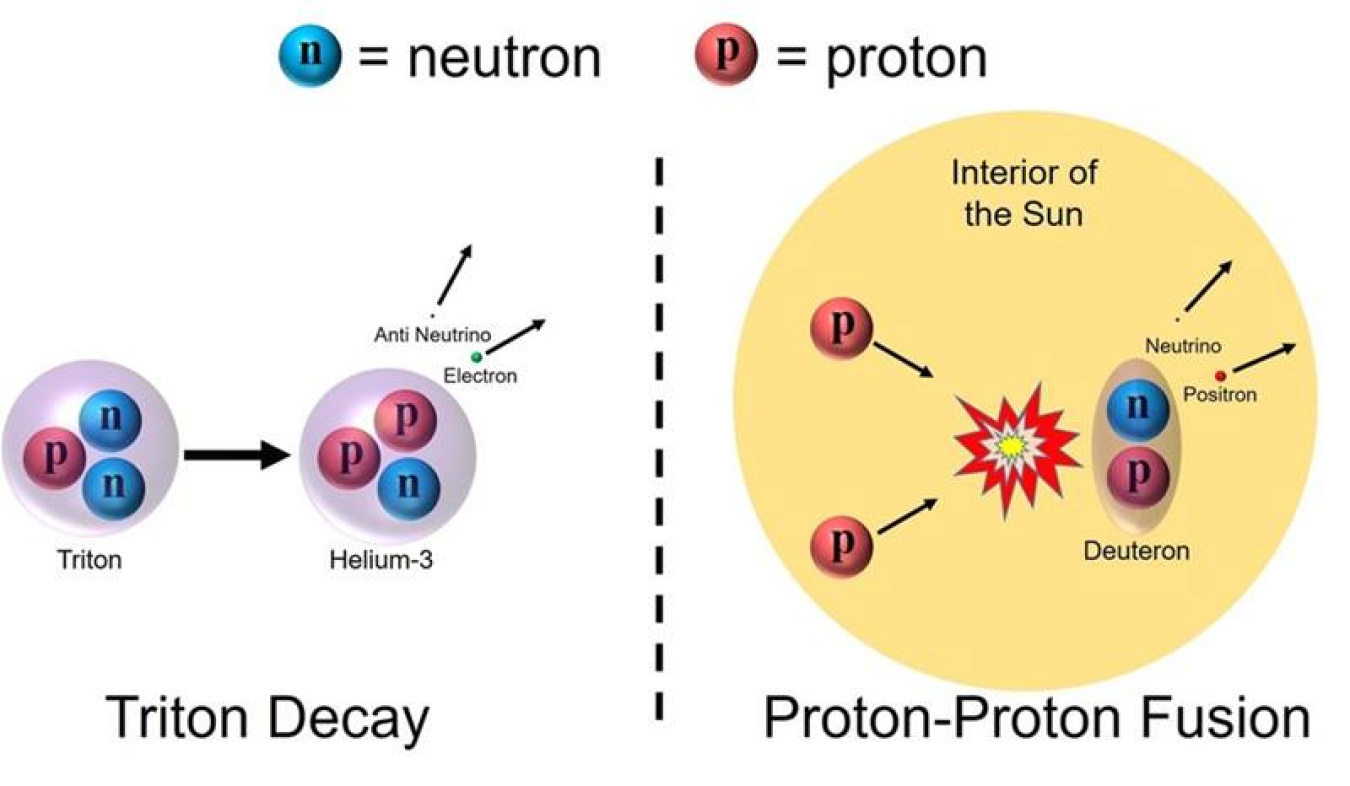Remarkably, the rate of proton-proton fusion in the sun is not precisely understood, but it can be better predicted using the process of triton decay.
July 7, 2025The Science
The Sun and other stars shine by fusing hydrogen into helium. First, two protons fuse. This involves one proton beta decaying to a neutron, a neutrino, and a positron (the antimatter version of an electron). The neutron binds with the second proton to form a deuteron (the nucleus of the hydrogen isotope deuterium). Deuterons and protons then fuse to produce helium atoms. The fusing of two protons is one of the least understood steps toward producing helium. This gap in knowledge limits scientists’ understanding of how the Sun shines. In this research, scientists show that a laboratory-based measurement of the decay of a triton (an isotope of hydrogen, tritium, whose atomic nucleus has two neutrons and one proton) to helium-3 (an atomic nucleus with two protons and one neutron) can reduce much of the uncertainty surrounding proton-proton fusion.
The Impact
Proton-proton fusion is essential for energy production in the Sun and for life on Earth. A better understanding of the fusing of two protons improves scientists’ ability to determine the amounts of hydrogen and helium observed throughout the universe. It also helps scientists understand the ultimate lifetime of the Sun and the properties of the neutrinos that the Sun emits. This should lead to a more accurate interpretation of data from neutrino detectors here on Earth.
Summary
The proton-proton fusion reaction in the Sun happens at a very slow rate: it takes on average nine billion years for protons to fuse. Hence, for protons with solar energies, it is difficult for scientists to precisely measure their fusion rate in the laboratory. Meanwhile, researchers have measured the triton lifetime to high precision. Both processes involve neutrinos, nearly massless neutral particles that interact weakly with normal matter. The weak interaction present in triton decay can be used to predict the rate of proton-proton fusion.
Neutrons and protons are made up of particles called quarks and gluons. At high energies, or short distances, quarks and gluons become important. However, at low energies or large distances, quarks and gluons cannot be resolved. This is similar to how you cannot see the tiny individual pixels when you look at a phone or a computer screen. Thus, at the relatively low energies of proton-proton fusion, researchers use an effective theory of neutrons and protons to calculate the proton-proton fusion rate to higher precision.
Contact
Ha S. Nguyen
Duke University
ha.s.nguyen@duke.edu
Jared Vanasse
Fitchburg State University
jvanass3@fitchburgstate.edu
Funding
This work was supported by the Department of Energy Office of Science, Office of Nuclear Physics.
Publications
Nguyen, H.S., and Vanasse, J., Tritium beta decay and proton-proton fusion in pionless effective field theory. Physical Review C 110, L021001 (2024). [DOI: 10.1103/PhysRevC.110.L021001]
Related Links
To learn more about the related physics, read Anthony C. Phillips’ book, The Physics of Stars.


